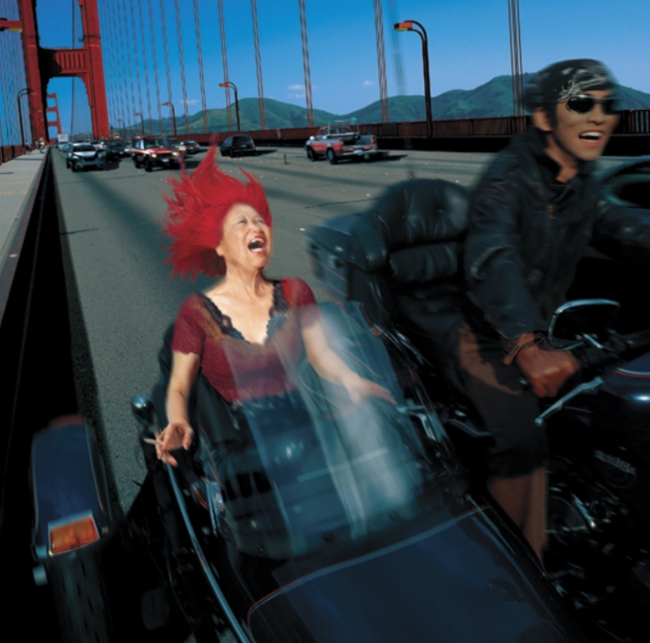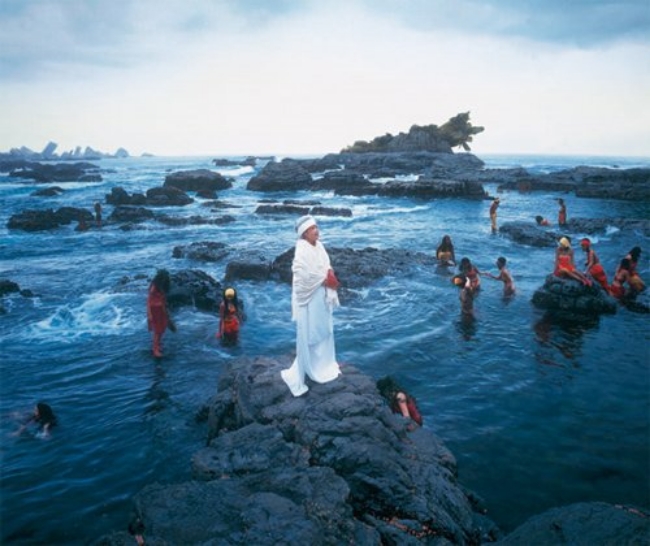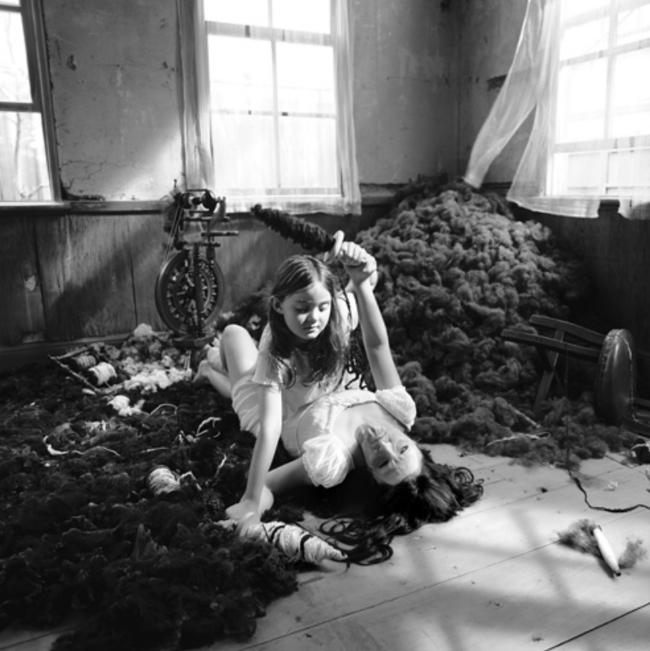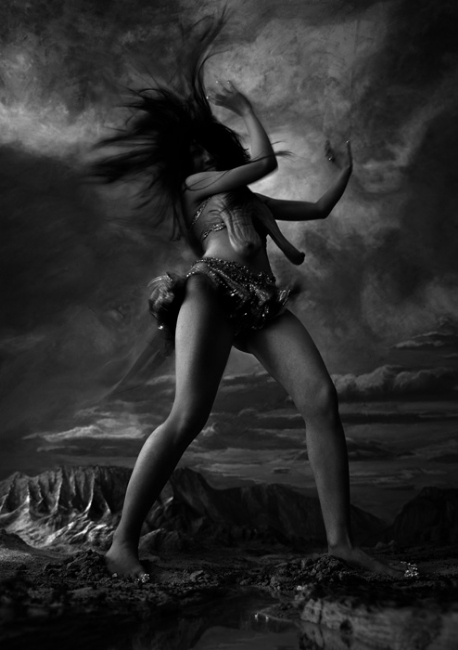We rarely acknowledge the role luck plays in an artist’s career. We’re all aware of it, of course, but we generally like to pretend it all comes down to talent (or, for those artists whose work we dislike, a venal agent and a lot of hype). But the fact is, a large dollop of good luck at the right moment is often critically important.
Miwa Yanagi (for convenience, I’m using the Westernized version of her name) was born in 1967 to a father who owned a successful business in Kobe, Japan. “I was an average child,” she said to an interviewer, “going back and forth between a typical Japanese high school and home. That was all and it was boring.” She was interested in art and had decided to study fine arts at university, but she apparently had no real thought of becoming an artist. Studying fine arts seems to have been more of a career decision. “My parents are typical and wanted me to have a stable marriage with the right person and have a promising job.”
That might have happened; she might have taken a job and gotten married and led a normal life—except for a spot of good luck. While preparing for the entrance exams to get into the Kyoto University of Arts, she took drawing lessons from a young man named Katsushige Nakahashi, whose passion for art inspired her to actually consider becoming an artist. During her studies, she developed an interest in performance art. Her first introduction to artistic success came after she’d graduated and had taken a job as a teacher. It was a performance piece called Elevator Girls.
Elevator girls are a uniquely Japanese cultural institution. They’re young women employed by large department stores to greet customers, operate the self-service elevators, and to stand by the elevator doors to announce their arrival. They wear uniforms, bow to the customers, and deliver standardized greetings accompanied by ritualized gestures. Today elevator girls are less common than they were, but some department stores continue to employ them.

The Elevator Girl performance pieces were staged in 1993 at a Kyoto art gallery. They involved a model/actress standing in a mock elevator dressed in an elevator girl uniform, delivering a ritualized elevator girl monologue accompanied by repeated, ritualized elevator girl gestures.
Yanagi wasn’t entirely satisfied with the live performances. She wanted more control over the work and she wanted to expand the scope of the concept. She decided to switch to photography. Her Elevator Girls series depicts groups of Japanese women, dressed identically in uniforms, posed in futuristic architectural environments that are as lovely and synthetic as the subjects in them. All of the photographic prints were large, but several were absolutely huge; some panels measured sixty feet in length.
Then came Yanagi’s second and most critical brush with luck. In 1996 Yasumasa Morimura, a successful fine arts photographer, asked to use her home as a set for some conceptual self-portraits. He saw her photographs, was impressed by them, and then performed one of those acts of astonishing generosity you sometimes see in the art world. Morimura had been invited to exhibit show his work at the Shirn Kunsthalle in Frankfurt, Germany. He contacted the exhibitors and convinced them to invite Yanagi as well.
Her work was hung alongside such photographic luminaries as Jeff Wall and Cindy Sherman. And she was a hit.
Following the success of Elevator Girls, Yanagi began a new series of images collectively called My Grandmothers. She asked young women to imagine what they wanted their lives to be like fifty years in the future. Using make-up, elaborately staged settings and digital manipulation, Yanagi created scenes from those imagined futures.

Conceptually, My Grandmothers was radically different from Elevator Girls. The earlier series grew in part out of Yanagi’s frustration at being a young woman assigned to a limited role in a rigidly standardized society. Although she wasn’t an actual elevator girl, she still felt constricted by Japanese societal expectations. As a teacher she was expected to behave in a specific way and to dress in a certain way, similar to the robotic cheerfulness and uniform appearance of the elevator girls.
Because of social pressures, Yanagi said young Japanese woman are often reluctant to express how they’d like to live their lives. They may be comfortable dressing in outrageous fantasy costumes in their free time, but they apparently draw clear distinctions between their entertainment and their ‘normal’ life. They may find it difficult to talk about the lives they want to live, but they can, however, talk about the lives they want to have lived half a century in the future. “In order for them to recall their childhood dreams, they need to be liberated from their youthfulness,” Yanagi has said.
Where Elevator Girls was about the restrictions imposed on young women by social roles and expectations, My Grandmothers was grounded in the concept of mature women who’ve cast those roles and expectations aside.

Even while working on My Grandmothers, which she sees as a long-term ongoing project, Yanagi began a new series of images based on European fairy tales. Not the tidy, harmless, Disney-style versions considered appropriate for the delicate sensibilities of modern children, but the older violent and gruesome original versions. She sometimes presents scenes from the tales as they were told, at other times she reinterprets the scenes to make the meaning and moral of the story more ambiguous. Once again, she made a radical change in her approach to the work. Where her earlier series involved bright color, these images were black and white. Where her earlier series involved extensive digital manipulation, Yanagi abandons the computer for the Fairy Tales photographs. Where the earlier series tended to address issues primarily experienced by Japanese women, the stories behind Fairy Tales are almost entirely European (there are a few exceptions). As with her other series, though, Yanagi continued to focus her attention on women—or, in this case, girls. The models for Fairy Tales were mostly between ten and twelve years old.
In the Fairy Tales images, Yanagi has girls engaged in some sort of conflict: young versus old, innocence versus a form of depravity (one of the girls wears a latex mask of a hag). At the same time, she deliberately confuses youth and age by making no attempt to disguise the youthful bodies of her models.
In Elevator Girls her subjects were youthful and beautiful, but robotic and interchangeable; they were trapped in a world created by others and were essentially little more than pleasing accessories in temples of consumerism. In My Grandmothers Yanagi’s subjects were freed—freed from having to be beautiful, from having to meet the expectations of others, from all the traps that confined the elevator girls. The old women were wise individuals, each in control of her own life. With Fairy Tales, Yanagi’s young subjects aren’t trapped, but neither are they wise and fulfilled. She seems to be implying that youth and age are always in conflict, that within every young girl is the potential for becoming a wicked hag, and within every hag is the innocent young girl she once was. Unlike so many fairy tales, nobody here is going to be rescued, and certainly not rescued by a man. In Fairy Tales Yanagi also appears to suggest that young girls need to struggle against old customs if they’re to become wise women and avoid becoming wicked hags.

Yanagi’s most recent series, Windswept Women expands on that theme. This is a series of five very large (more than twelve feet tall) digitally manipulated photographs of giant women of various ages dancing against a desolate background. Once again she deliberately confounds traditional notions of age. The youngest woman—a teenager—has the wizened breasts of an old woman, whereas the oldest woman—in her 70s—has the full breasts of a young woman. Yanagi describes these characters as “an imaginary family” of “social outcasts, moving from one place to the next.” These are strong, independent women who are as much a representation of primitive myth as anything else. They exercise a wild and elemental sort of power through their dance.

Yanagi is sometimes referred to as a feminist photographer, and certainly there are feminist elements to her work. The status of women is central to her photography and Yanagi has said she hopes her work will inspire Japanese men and women to re-think their notions of women’s social roles. She accepts the feminist label and doesn’t appear to fret about whether it will limit the appeal or interpretations of her work. In truth, her images are as much about cultural institutions as they are about feminist perspectives.
“I’m happy with people thinking of my work as feminist art, but I don’t set out with that intent. If you are making art on the basis of an agenda, it will inevitably lose its power.”
Yanagi has concentrated her attention on the extreme poles in the lives of women, either photographing girls/young women or older women. To date, she has avoided any exploration of women in the middle years. She has, though, expressed concern about the social isolation of traditional Japanese housewives, women who’d been employed in a conventional women’s occupation, but after marriage focused all their attention on “their children, husbands, and housewife neighbors.” Yanagi has said she sees the problem in her own mother. “She rarely goes out, and when she does she’s like a child. One becomes incapable of going somewhere alone or thinking independently.“
After finishing her Windswept Women series earlier this year, Yanagi stated “I’ve been working intensely on this project, [now] I just want to go home, read a book and reflect. I don’t have any plans.” At age 42, Yanagi now belongs to that age group she’s so far avoided photographing. Perhaps her next project will be women her own age; perhaps she’ll turn her camera on Japanese housewives.
Yanagi has done something dangerous as an artist. She has raised our expectations. Regardless of what she does next, her evolution as a photographer has given us reason to believe it will be visually different from what she’s done in the past. She may continue to explore the same themes, she may abandon those themes altogether, but the arc of her work leads us to presume the style of the imagery will change in some unanticipated way.
There are very few contemporary photographers whose new work you expect will surprise you. Miwa Yanagi is one of them. It must be a terrible burden.
